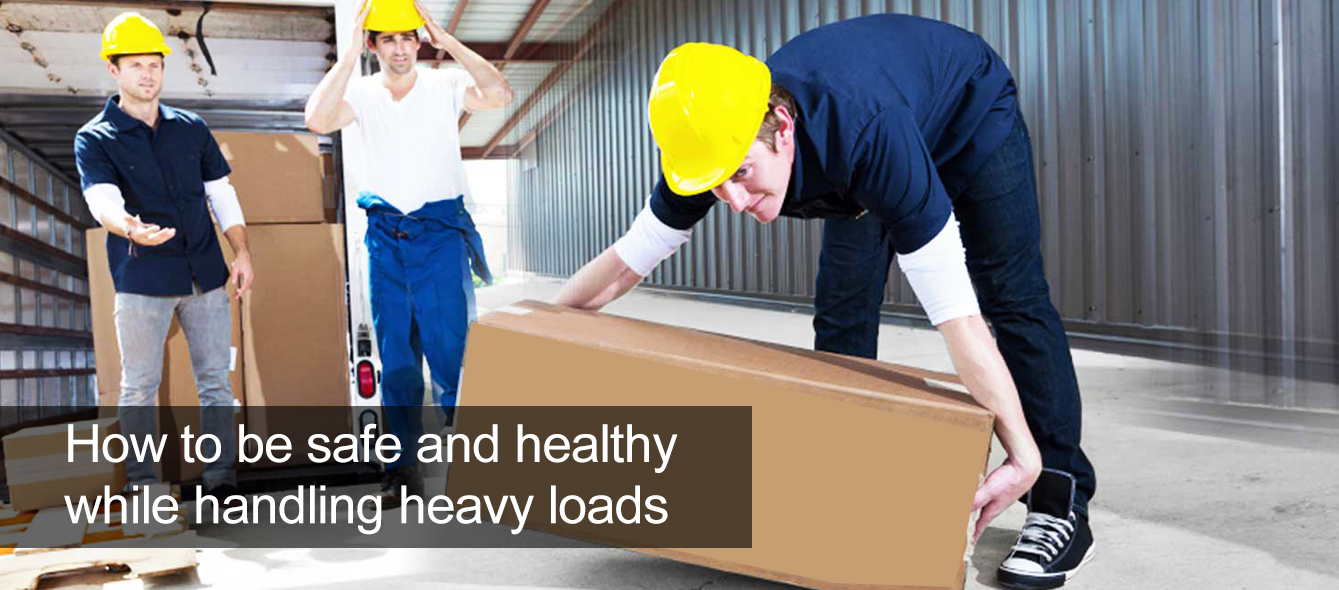
How to be safe and healthy while handling heavy loads
Workers handling, lifting or carrying heavy loads can impact their physical health. The most common ailments which workers engaged to lift loads are musculoskeletal injuries (MSIs), hair-line fracture, strains, sprains besides other bone and muscle-related disorders. Workers can also get hurt badly due to trip and fall while carrying heavy loads.
Effective ergonomic measures can reduce the risks and prevent injuries caused due to excessive bending, sudden lifting of massive loads without proper training and inappropriate posture while lifting or handling loads.
The Risks
Injuries caused due to handling of loads can occur in any industrial surrounding. Workers are exposed to injuries when they lift, head-carry or lower heavy objects.
What are the risk factors?
- Nature of the weight of loads
- Impact on the physical health of workers. (For example, loads lifted far from the body can impact severely than when they are lifted closer to the body)
- Distance of loads to be carried
- Height and weight of the loads and the vertical distance from which it is lifted
- Shape and size of the loads
- Inappropriate lifting and turning
- Carrying loads for longer hours
- Lifting and carrying loads at frequent intervals without breaks
How to reduce risks
While applying appropriate risk control measures, managers or employers must get the view of health and safety committee or the representatives who care for workers’ health and safety. It is however, advisable to test the risk control measures fully without implanting them at workplaces.
In order to identify viable risk controls, analyse the following types of control measures.
Engineering controls
By making some changes in the facilities, processes and equipment, one can reduce the risk exposures. Some of the vital parameters to be considered are:
- Is it possible to include lifting aids such as pallet jacks, hoists, carts or conveyer channels which can reduce the impact of manual handling of loads?
- Can the loads be lifted within knee and waist height?
- Is it possible that the vertical distance of the loads to be lifted or lowered be kept to minimum level?
- Can the workers unload their goods on the reduced platforms or shelves?
- Is it possible to provide more open space for workers so that stooping or twisting while lifting loads can be avoided?
- Can the loads be made smaller in size? Prefer smaller consignments of loads or splitting loads among more workers to reduce the burden on few workers.
- Whether it is possible to reduce the carrying distance by altering the workflow?
Administrative controls
By implementing new work policies and practices and providing frequent training to workers on safe lifting techniques, employers can reduce the occurrences of MSIs.
To avoid lifting related injuries, the following points are worth noted:
- Change the task design, if possible. For instant, instead of carrying a load, one can use a cart and push to the destination.
- Giving enough rest can make workers recoup quickly from the stress.
- Providing industry-standard wages and other statutory allowances such as medical benefits, accidental insurance etc, can be a psychological booster.
- Consider creating a good balance between work demand and work pace for effective work completion
- Depending upon individual capacity and health, loading tasks can be altered.

 NEBOSH CERTIFICATE
NEBOSH CERTIFICATE NEBOSH DIPLOMA
NEBOSH DIPLOMA IOSH
IOSH SAFETY DIPLOMA
SAFETY DIPLOMA CPD UK
CPD UK ROSPA UK
ROSPA UK FOOD SAFETY
FOOD SAFETY 



